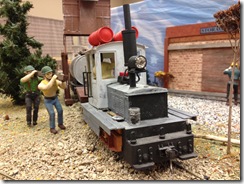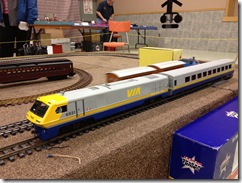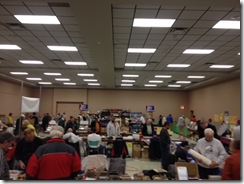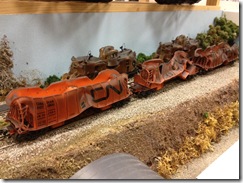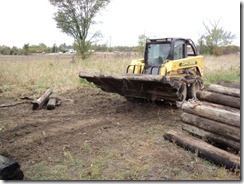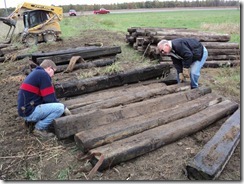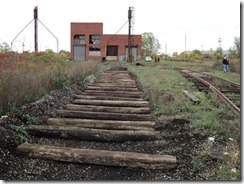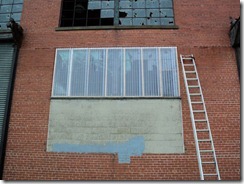The final Niagara Falls Model Railway Show to be held in Niagara Falls, is now over.
Our October show is usually the smaller of the 2 shows we hold, but it was still well attended by vendors and visitors. A total of 5 layouts in 4 scales were at the show, along with a small set up of the wooden Thomas The Tank Engine toys. Just over 300 paid adults (not including the kids) attended the show, which was fairly decent considering the weather, and such. Sales were up at the NRM store table, and some of our new items were hot sellers. We are the only show to sell chili, and it was as always, a very popular item with the vendors and attendees. The Niagara Railway Museum Inc. would like to thank all the vendors who came out, many have been with us from the start, and to those who joined us for the first time. We could not have a successful show without the vendors. But we also thank everyone who came out to look and shop, and support both the Museum and our vendors.
Jim Cherry brought out a great layout in 5/8? scale, which makes O scale track 2ft gauge. The cars are all scratchbuilt, and the locomotives are kit bashed from Atlas Plymouth MDT locomotives (left). Jim brought his scratchbuild G scale LRC to the show once again this year. This is an exquisite model, and is one of a kind. He currently has 3 coaches built as well, and one of the painted ones can be seen in the photo with the locomotive. Because the curves are such a tight radius, the loco and coach could not run together, but the locomotive was running around the layout for quite a while (right).
The show was fairly busy off the start, and a lot of people were buying, many walking out the door with boxes of trains (left). The Southern Niagara Model Railway Club, who we reported on in another blog post, showed a few of the cars that were completely destroyed by a fire at their club earlier this year. They managed to raise a few dollars to help towards the rebuild of the club layout. If you would like to help, please contact us and we?ll tell you how to reach them (right).
After 12yrs the Museum was told last year that this would be the final show at the hall, and we would have to find a new location. That deadline has since been extended into next year, but the sow planners decided to keep with the new plan, and move to a new location. Optimist Hall was the most reasonably priced hall in NIagara Falls, and it is a big loss to the many charitable and non-profit groups that have been able to benefit from that. As for our show, we were not able to locate another hall in Niagara Falls that fit in with our budget, as we wanted to keep our table prices the same. Because of this, we have decided to move the show out of Niagara Falls, and into St. Catharines, where a suitable hall was located.
So, the Niagara Railway Museum Inc. hopes you will join us at the all new Niagara Model Railway Show, at the CAW Hall on Bunting Road in St. Catharines, Ont. On Sunday March 3, 2013 from 10am-3:30pm. We look forward to having a bigger and better show, and to continue to build on our past 12 years of success.

